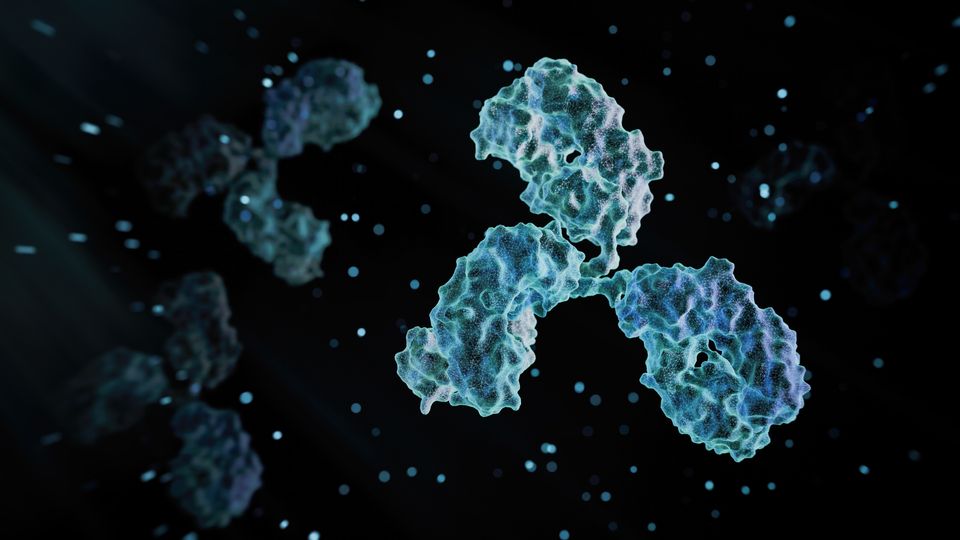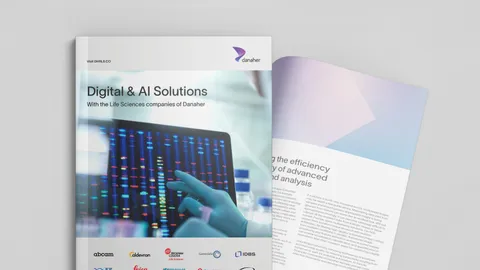Accelerating Antibody Discovery With AI and Machine Learning
Discover how AI and lab informatics are transforming antibody discovery.

Complete the form below to unlock access to ALL audio articles.
Artificial intelligence (AI) and machine learning (ML) are having a significant impact on how the biopharma industry develops new therapeutic antibodies. What historically has been a slow, trial-and-error-based process, mostly carried out at a lab bench, is now becoming a fast, data-driven discipline using in silico research methods and computational power.
The impact of AI is seen at the earliest stages of antibody discovery, giving researchers the ability, for example, to screen millions of antibody sequences and predict key properties like diversity in antibody sequences, number of unique variants available for screening, and panning and selection, accelerating the early stage of the drug discovery pipeline.
Thanks to iterative loops, where in silico predictions guide wet lab experiments and lab results improve the models, researchers can achieve higher precision and efficiency in therapeutic development.
At the heart of this transformation is data. To be successful, AI models require high-quality, scientifically robust and well-managed training data, and while an increase in the use of synthetic data is helping to bridge data gaps, access to real-world data remains essential.1
It is for this reason that lab informatics tools, including electronic lab notebooks (ELNs) and laboratory information management systems (LIMS), are critical, acting as connectors across teams, technologies and data types, centralizing and contextualizing experimental data and enabling seamless integration with AI models. This approach creates a continuous feedback cycle where AI refines lab tests, and the results power the next round of predictions.
How AI is accelerating early stages of antibody development
While AI is having an impact across large areas of antibody discovery, there are three areas that are seeing some of the most exciting progress: structure prediction, antibody-antigen interaction modeling and optimization. Tools like AlphaFold2 and RoseTTAFold have demonstrated the ability to predict protein structures from amino acid sequencing, and while these were major steps forward, antibody discovery brings specific challenges, especially in the CDR regions that determine how they bind to antigens.2–3
However, new antibody-specific tools like IgFold are using language models trained on hundreds of millions of antibody sequences to speed up the identification of successful candidates.4
In antibody-antigen interaction modeling, we are beginning to see AI help us with the design of antibodies with high specificity for the target antigen. AI systems like AlphaProteo use a combination of structure prediction and deep learning to model how an antibody will interact with a target, often without knowing the precise binding site in advance, to generate new protein binders.5
One of the most exciting examples of this is the ESM-IF1 model developed by researchers at Stanford.6 This model does not rely on labeled experimental data sets but uses the 3D backbone of a protein structure to predict sequences that are likely to fold into shape. In one study, the team used ESM-IF1 to improve two SARS-CoV-2 antibodies. Although they tested only 30 variants, they achieved up to 25-fold improvements in neutralization potency and 37-fold increases in binding affinity, representing a completely different way of doing antibody optimization.
The third area where we are seeing AI positively impact antibody discovery is in optimization. Once researchers have identified a promising antibody, they need to improve binding strength and reduce off-target effects; this ensures it's stable and, importantly, manufacturable.
Tools, such as the Protein Repair One-Stop Shop (PROSS), can optimize protein sequences by designing mutations while preserving function and improving structural stability.7 AI models can simulate mutation and screening cycles in silico.
Challenges to AI adoption in antibody discovery
With any transformative technology, there are a number of major hurdles to be addressed to make visible the important impact of AI in antibody discovery. The largest and most important of these is data.8 Scientific AI models rely on the data on which they are trained to be accurate, specific, and organized.
While there are enormous libraries of antibody sequences, that data is often missing structural or functional context that is required to ensure accurate predictions.9 Private data sets tend to be siloed across teams or restricted due to IP concerns, and public data sets are often broadly distributed and lack standardization. These issues make it harder to train AI models on robust data sets, an issue that is compounded with rare or novel targets where data is even more limited.
Another challenge is the complexity involved in AI models. Antibodies have incredibly diverse structures, particularly in relation to how they bind with other molecules, and that diversity creates complexity when modeling. This lack of transparency makes it harder for researchers to trust the output or to troubleshoot when things go wrong.
Furthermore, there is still a lag between in silico research and wet lab validation. While AI can identify or design thousands of candidates, the wet lab cannot scale at the same pace, and even with the improvements in high-throughput screening, there can be a bottleneck.
Ensuring AI success through lab informatics
To unlock the full potential of AI in antibody discovery, it is important to go beyond the models themselves to examine the infrastructure on which they depend, specifically modern platform-based lab informatics solutions. This is the digital backbone of a lab, including ELNs, LIMS, scientific data management systems (SDMS) and workflow tools, which collectively structure, capture and connect the diverse and complex data that is generated across biopharma R&D, from initial antibody screening to manufacturability.
Science-aware data is central to the efficacy of AI in research, but it's not solely about the quantity of the data available; it's important that the data is well annotated, consistent, contextual and accessible. It is essential that this data accurately reflects scientific and biological realities. A modern LIMS can ensure that experimental data, historically found in fragmented formats or with inconsistent metadata, is managed in a standardized environment that ensures it can be seamlessly integrated from the lab to the AI model.
Additionally, a modern lab informatics platform can help to address the bottleneck between in silico and the wet lab. Informatics platforms can help the lab to scale by automating data capture, managing experiment queues and integrating sample tracking with experimental results. This allows wet lab scientists to prioritize the most promising candidates early and minimize redundant experimentation.
A third key benefit is how lab informatics supports the lab-in-the-loop model, a concept that is central to how AI and experimental science can work together. In a lab-in-the-loop model, AI operates as part of a continuous cycle, generating hypotheses, informing experimental design and learning from the results. AI models can create a closed and intelligent feedback loop where real-world results guide in silico predictions.
Conclusion
From modeling structure and binding to optimization, AI is accelerating the science of antibody discovery as the industry shifts towards smarter and more data-driven workflows.
However, the real impact comes when AI is paired with the right lab infrastructure. Without high-quality and contextual data and the systems to manage it, there is a risk that AI cannot achieve its full potential. That is where modern lab informatics platforms excel. They form the digital backbone ensuring data integrity, traceability and scientific context. They reduce human error and ensure data are reproducible, which is key for training effective AI models.
Ultimately, it is the lab-in-the-loop model – where predictions guide experiments and outcomes inform the next round – that unlocks the full potential of AI in antibody discovery. It is not just about accelerating timelines but about enabling a smarter, more adaptive approach to drug discovery. With the right lab informatics foundation, AI becomes more than a tool – it becomes a catalyst for continuous improvement across the entire antibody development lifecycle.



